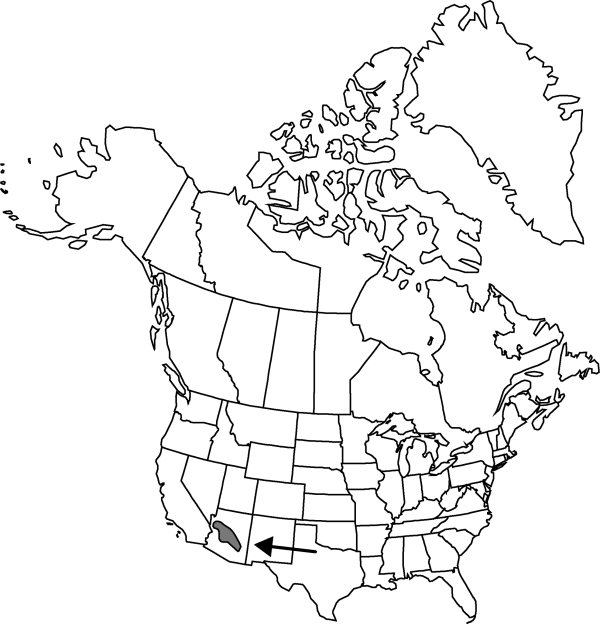familyCactaceae
subfamilyCactaceae subfam. Opuntioideae
genusCylindropuntia
speciesCylindropuntia acanthocarpa
Difference between revisions of "Cylindropuntia acanthocarpa var. thornberi"
Cactaceae 1: 184. 1958.
Common names: Thornber cholla
Endemic
Basionym: Opuntia thornberi Thornber & Bonker Fantast. Clan, 133, 135 (fig.), 148. 1932
Synonyms: Opuntia acanthocarpa var. thornberi (Thornber & Bonker) L. D. Benson
FNA>Volume Importer |
imported>Volume Importer |
||
| (One intermediate revision by the same user not shown) | |||
| Line 8: | Line 8: | ||
}} | }} | ||
|common_names=Thornber cholla | |common_names=Thornber cholla | ||
| + | |special_status={{Treatment/ID/Special_status | ||
| + | |code=E | ||
| + | |label=Endemic | ||
| + | }} | ||
|basionyms={{Treatment/ID/Basionym | |basionyms={{Treatment/ID/Basionym | ||
|name=Opuntia thornberi | |name=Opuntia thornberi | ||
| Line 55: | Line 59: | ||
|publication title=Cactaceae | |publication title=Cactaceae | ||
|publication year=1958 | |publication year=1958 | ||
| − | |special status= | + | |special status=Endemic |
| − | |source xml=https:// | + | |source xml=https://bitbucket.org/aafc-mbb/fna-data-curation/src/2e0870ddd59836b60bcf96646a41e87ea5a5943a/coarse_grained_fna_xml/V4/V4_224.xml |
|subfamily=Cactaceae subfam. Opuntioideae | |subfamily=Cactaceae subfam. Opuntioideae | ||
|genus=Cylindropuntia | |genus=Cylindropuntia | ||
Latest revision as of 21:57, 5 November 2020
Shrubs, with few to many branches, at acute and obtuse angles. Stem segments gray-green, 10–25(–50) cm; tubercles very prominent and broad, 2.5–4.5 cm. Spines 6–11(–14) per areole, rarely interlacing with spines of adjacent areoles, yellow to deep red-brown, aging gray, not baggy sheathed; major abaxial spines usually deflexed and spreading. Flowers: inner tepals yellow to bronze. Fruits bearing few spines, sometimes spineless; areoles 12–20. 2n = 22.
Phenology: Flowering mid-late spring (Apr–Jun).
Habitat: Sonoran and Mojave deserts, desert grasslands, chaparral transition areas, rocky hills, ridges
Elevation: 600-1500 m
Discussion
Selected References
None.
Lower Taxa
None.
